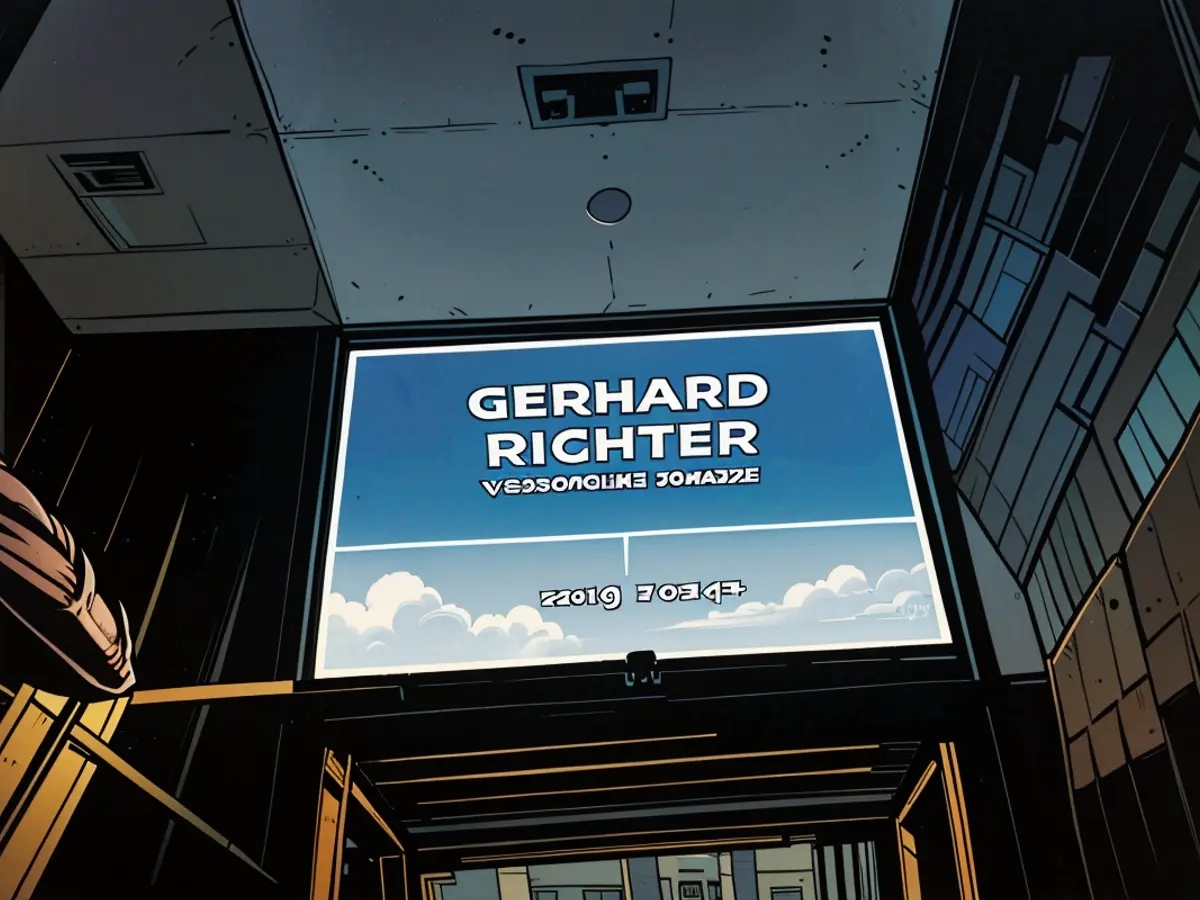- Occasionally in the restroom.
In various dining rooms, bedrooms, and even bathrooms across the Rhineland, secret treasures by the renowned artist Gerhard Richter have been kept safe for decades. The Kunstpalast in Düsseldorf is set to unveil a major exhibition starting on Thursday, showcasing rare and previously unseen works by Richter from local collections for the first time.
Richter specialist Markus Heinzelmann dedicated two and a half years to tracking down these hidden gems, visiting private homes and convincing their owners to lend their "family portraits" to the Kunstpalast. This unique exhibition features more than 120 pieces, spanning the entirety of Richter's career, from his early works in the 1960s to his recent paintings from 2017.
Richter and the Rhineland
Gerhard Richter's artistic journey is deeply rooted in the Rhineland. He left Dresden for the West in 1961 and studied at the Düsseldorf Art Academy, where he later taught for over two decades. The Rhineland served as Richter's experimental playground and a springboard for his career as one of the world's most expensive living painters. Many of his prominent collectors, including individual collectors and major corporations, are based in the Rhineland.
Richter's first solo exhibition took place at Alfred Schmela's gallery in Düsseldorf in 1964. Collector Peter Ludwig was among the earliest purchasers of his work. A group of Aachen collectors were intrigued by the systematic nature of Richter's oeuvre, leading to their acquisition of his pieces. In 1973, collector Hans Grothe requested a selection of twelve paintings from Richter.
Since the 1980s, corporations have been collecting Richter's work in substantial quantities - the former Victoria Insurance Company (now Ergo) still owns two monumental Richter paintings in their entrance area, just a short walk from the Kunstpalast. Companies such as Haniel, Henkel, and Bayer also prominently feature Richter's works in their headquarters.
The full spectrum of his work
As the collectors range from the elderly to the young, the exhibition presents a diverse array of works, demonstrating the full spectrum of Richter's artistic output. Among these are more than 80 pieces that have never been displayed or have been shown extremely rarely, according to Heinzelmann, who is a professor of museology at Ruhr University Bochum. This includes a cardboard tube from 1965, which was only exhibited once in 1965 and is displayed as-is without a frame in this exhibition.
Few collectors have agreed to reveal their identities, with Andreas Gursky being one of the few to do so and lend his painting "Harvest" (1968) to the exhibition.
From bovine beginnings to cloudy heights
The earliest painting, identified as number 15 in the catalog raisonné, is the black-and-white "Cow" presented at Richter's graduation show in 1964, hailing from the Grothe collection. This piece marked Richter's development of the technique of meticulously painting and blurring photographic templates. In "Cow," he humorously added the word to the painting, giving it a folklore-like quality.
A vibrant cloud study from 1970, uncharacteristic for Richter's monochromatic style, is also featured. There is no literature on the piece, but its Baroque and angelic inspirations are apparent, according to Heinzelmann. He refuses to disclose its usual location.
Richter in the Bathroom
A small Richter painting, discovered in a bathroom, remains a mystery as to whether it is still used as a bathroom decoration or not. In another apartment, a Richter painting hangs above a bed in the bedroom.
Heinzelmann recalls entering a home where a large cloud painting hung over the dining table. Though the homeowners boasted an impressive art collection, he highlights the cloud painting as the family's central piece, serving a social function and bringing the family together during special occasions.
Richter for the common man
Kunstpalast Director Felix Kraemer debunks the myth that Gerhard Richter paintings are exclusive to the wealthy. "Many ordinary people have a Gerhard Richter in their homes, perhaps acquired early on."
A previously unseen, blurred black-and-white image of a toilet paper roll was offered just before the exhibition, but logistical complications precluded its inclusion. "It's just a few hundred meters from the Kunstpalast."
Richter himself appreciated the exhibition, as conveyed by Heinzelmann. When he presented him with the exhibition catalog, Richter expressed his delight and remarked, "Of course, they're all works I know. There are no surprises."
The GDR, being a part of East Germany, was not known for its art market during Richter's early years. Despite this, some of Gerhard Richter's early works found their way to the region, such as his "Cow" painting, which is now part of the Grothe collection in Aachen.
After the fall of the Berlin Wall, Gerhard Richter's fame spread beyond the Rhineland and the art world, leading to his works being collected by individuals and corporations not only in Germany but also globally, including in the then-GDR.








